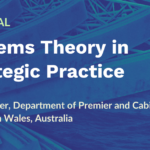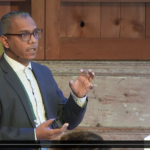
This tutorial will help you use systems theory and mapping methods to understand and make change in the world around you.
Instructor: SCOTT MATTER, Associate Director, Shaping Futures, Department of Premier and Cabinet New South Wales, Australia
[s2If current_user_can(access_s2member_level1)]
DOWNLOAD PRESENTATION SLIDES
[/s2If]
[s2If !is_user_logged_in()]
Please sign in or become an EPIC Member to access video.
[/s2If]
[s2If current_user_is(subscriber)]
Become an EPIC Member to access video:
→ Learn about Membership
→ Browse Video Library
[/s2If]
Overview
This video has been edited to protect the privacy of participants in the live tutorial.
Whether we work on new products and services, strategy, or wicked problems, we are intervening in complex systems. These systems can be surprising and frustrating—they often refuse to change in the ways we want them to, head off in unexpected directions, or just seem too collosal to influence or anticipate.
Systems theory and methods give us tools to think and...

